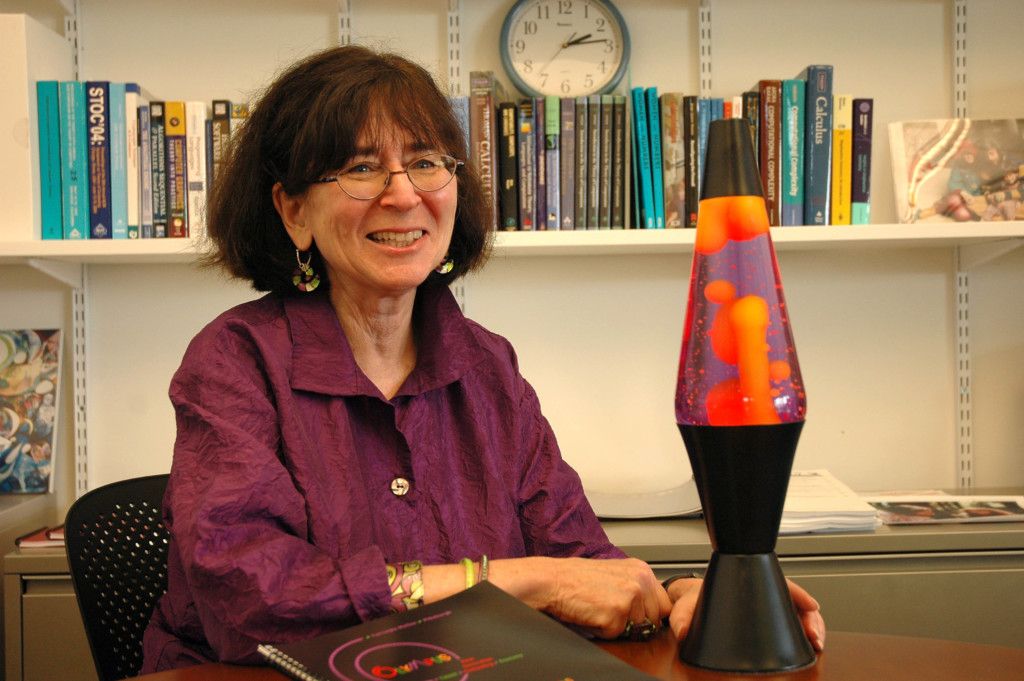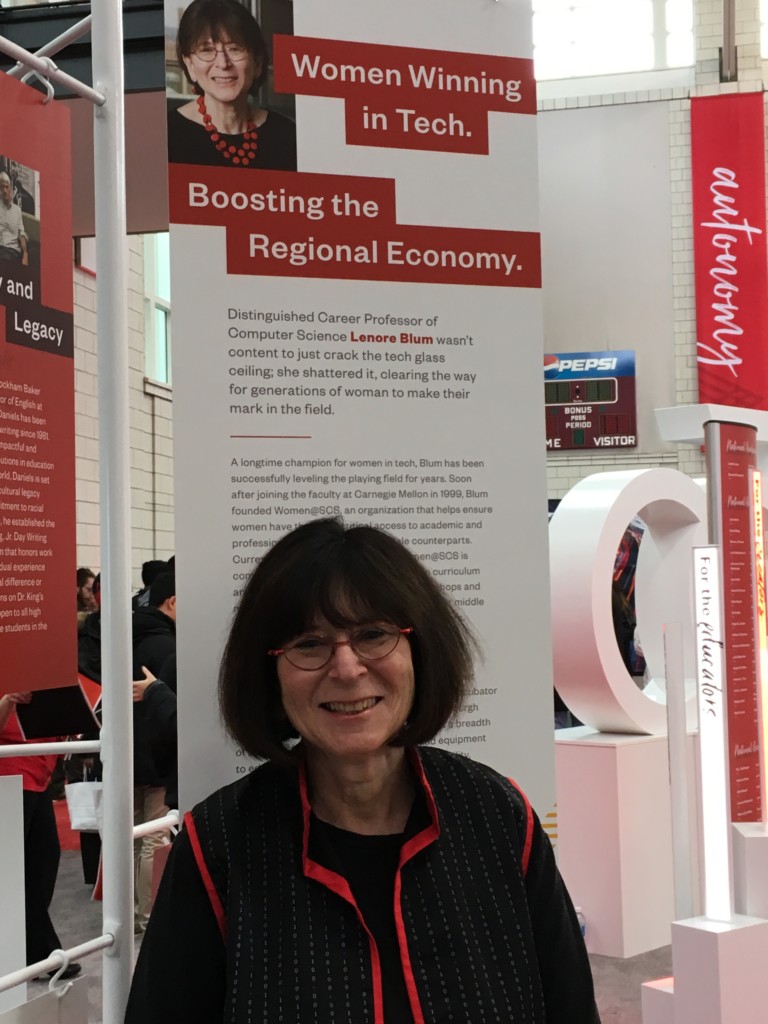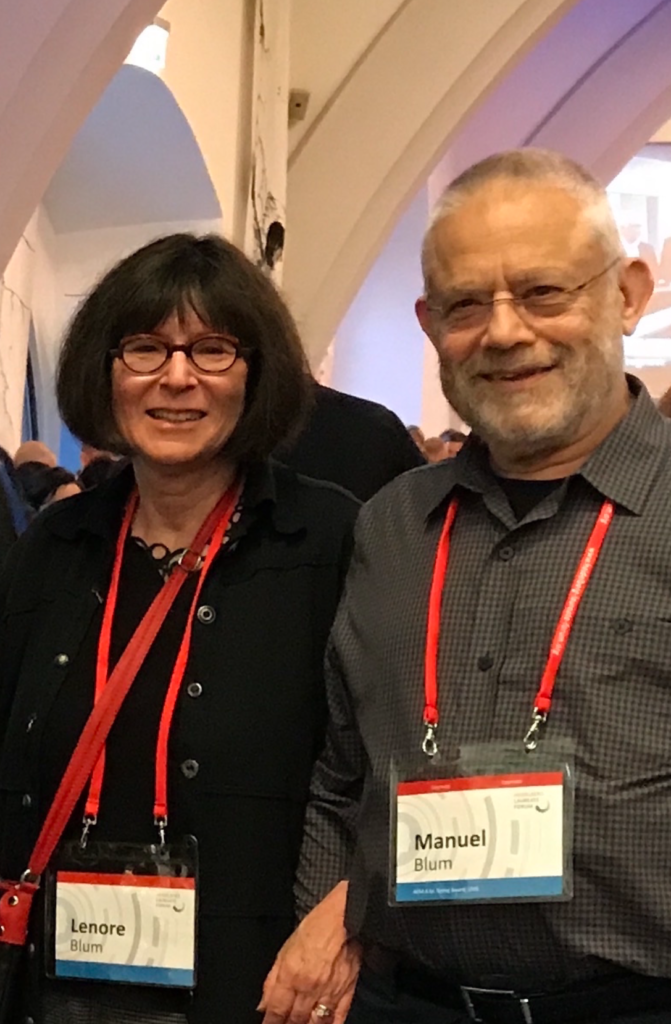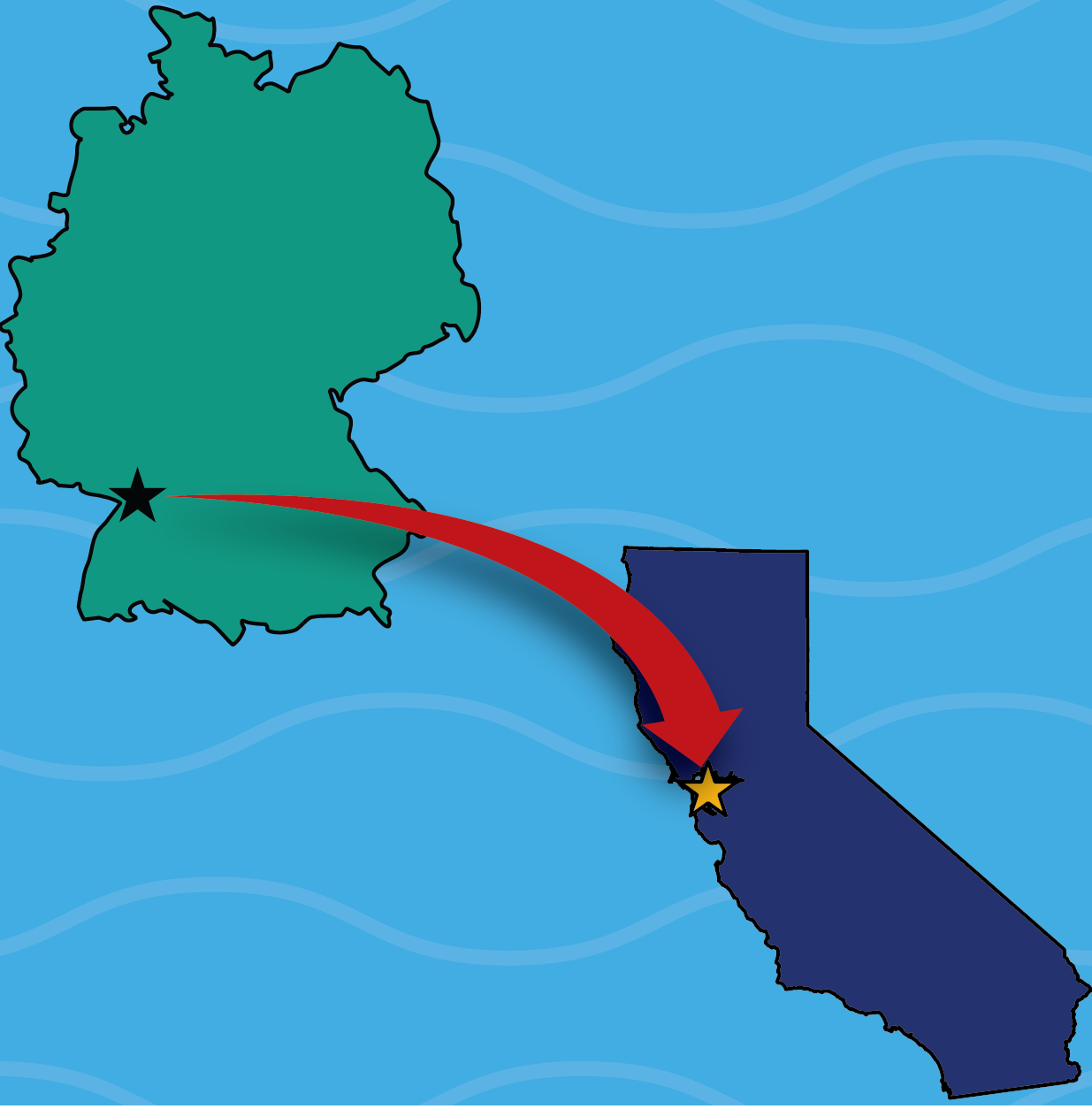An Accidental Activist: An Interview with Lenore Blum, Part 2
May 26, 2020

This article is part of STEMinism in the Spotlight, a monthly interview series.
In part 1 of 2, Lenore told us about growing up and finding her passion for math in Caracas, earning her PhD from MIT, and moving to Berkeley and becoming an accidental activist. In part 2 of the interview, Lenore tells us about her work as an activist, her research at Carnegie Mellon and her advice for women in STEM.
Amanda Glazer: How did you become an "accidental activist"?
Lenore Blum: Before Berkeley, I had not particularly identified with women scientists. In fact, at MIT I remember being very happy when they wrote letters addressing me as “Mr. Blum” because I thought, well finally, I’m accepted. Of course, this was outrageous, but other women at MIT told me exactly the same thing. Having blinders on has the positive effect of not taking things personally. But of course, having blinders on does not prepare you to deal with the bigger issues I faced when I got to Berkeley. I had no tools. I didn’t have those support structures. And I didn’t realize I needed it.
In the Berkeley tradition, those years were very political: Vietnam, People’s Park, Cambodia … Three faculty in the Math Department (Moe Hirsch, John Rhodes and Steve Smale) started a colloquium series on math and social responsibility. They asked me to talk about women in mathematics. I said, “Well I really don’t know anything about women in mathematics.” So I put a panel together: Sheila Johannsen, a historian at Berkeley who knew about the history of women in mathematics; Ravenna Helson, a psychologist who had done a study on women mathematicians and the creative personality; and Betty Scott, who was head of the Statistics Department and a friend of mine. A couple years before she had published a report, Report on the Subcommittee on the Status of Academic Women on the Berkeley Campus. It was a fantastic statistical study because it was not just the data (which she had), but also included stories and analysis. It really was the first thing I read that made sense to me about what was happening. I didn’t ask Julia Robinson to speak because I didn’t want to put her on the spot, but she came and sat right in front.
[caption id="attachment\\_17623" align="aligncenter" width="355"][](https://berkeleysciencereview.com/wp-content/uploads/2020/05/flyer.jpg) Flyer advertising the colloquium Lenore organized on "Social Problems Connected with Mathematics" in 1971.[/caption]
The event was packed. After that I became known as the expert on women in mathematics – at least on the West Coast – and many of the women graduate students started congregating around me. Judy Roitman was a graduate student then. We became great friends. She cheered me on then and has cheered me on over the years. I became active in the newly formed Association for Women in Mathematics (AWM) and by the next year we formed the Bay Area chapter. (This predates the Noetherian Ring.) I became the third president of the AWM.
The AWM will have its 50th Anniversary in 2021. It has been the key organization for exposing discrimination of women mathematicians in academia, at Berkeley and elsewhere, providing testimony to Congress, and has been the main force for positive change in the mathematics community.
Did you enjoy doing all that?
You know, it’s interesting. I never saw myself in this role but was amazed at how good I was.
Actually, I played a super important role because many of the people who were advocating for women in science (we didn’t have STEM in our vocabulary then) were not in science themselves. They were usually in women’s studies departments. A lot of the women’s studies groups were dealing with feelings about mathematics, what was called “math anxiety” (rather than giving people mathematical tools): what’s your feeling about mathematics? What experiences turned you off?
I was pretty well known in the math community and was frequently invited to talk to heads of math departments across the country. I recommended things that made sense and resonated with them: figure out ways to get women quickly into regular math courses.
In 1973 there was a study done on the Berkeley campus by then graduate student Lucy Sells. She found that only 8 percent of women (compared to 57 percent of men) entering college had enough high school math to take calculus.6 That meant that women entering Berkeley most likely could not major in any of the STEM fields or even the technical parts of other fields. The study, titled “High School Math as the Critical Filter in the Job Market”, hit the nail on the head.
So why don’t you design a college-level course, not a remedial course, that gets students into calculus quickly no matter their background? That is what I did at Mills College.
I actually started the Math/Computer Science Department at Mills in 1973. They had hired me as a substitute for a faculty on leave. I wrote a white paper on what I saw that a women’s college could do. It got circulated, people in the Advancement Office really like it. They sent the proposal to the San Francisco Foundation and got funding for it. Then I got fired from Mills. The dean thought I was turning it into a technological school. But the Mills College president had some professors from Stanford on his board, and they immediately offered me the opportunity to head a new department of Math and Computer Science at Mills. Later I was awarded the first Letts-Villard Chair which had a $1 million endowment. A lot of money at the time.
I also started to meet women with like-minded ideas, like Nancy Kreinberg at the Lawrence Hall of Science. She was running a program for girls called “Math for Girls”, (presenting girls with math activities and taught by women students in math and engineering at Berkeley) and later teacher training programs (Math Equals) and great math materials for kids and their parents (Family Math). Through Nancy, I started to understand what the teachers were doing and got a lot of respect for them. At the time, many mathematicians poo-pooed math teachers. I was able to be a bridge person between math researchers and math teachers. (Years later when I was Deputy Director of MSRI, I was able to start a program, “Conversations between Math Researchers and Math Teachers”, building on my earlier relationships.)
In 1974, Nancy and I became co-founding directors of what’s called the Math/Science Network. I don’t know if you know the conferences, Expanding Your Horizons (EYH)? The Network started them to provide role models, positive hands on experiences, and career information about STEM for middle and high school girls. The conferences have been going on all these years, across the country, serving close to a million girls. (At Carnegie Mellon, some of my students told me that they, and earlier their mothers, had attended EYH conferences.) I noticed that Berkeley sponsored an EYH conference this spring.
[caption id="attachment\\_17626" align="aligncenter" width="185"][](https://berkeleysciencereview.com/wp-content/uploads/2020/05/mathScienceNetwork.jpg) Math Science Network conference brochure from 1978.[/caption]
That redirected a lot of my life back then. I saw early on that it was how my political activity would be channeled. But I rationalized that I’d be able to do mathematics as well. On the other hand, to do these things well, and be effective, you can’t just do it on the side. You have to pay attention to what’s working, who are the right people to work with, all of these things. So, it took over a whole lot of my life.
What were some of the next research projects you worked on?
In the 80s I started to work with my husband on cryptographically secure pseudorandom sequences. On the one hand, these sequences are pseudorandom, not random, since they are generated by an algorithm. On the other hand, any information you wanted to get from these sequences would take too long to compute and so for all intents and purposes, they behave like random sequences: any test that you could run in polynomial time would not allow you to tell the difference between truly random sequences and these pseudorandom sequences. The key is to embed a very hard problem (re: complexity theory) into the decryption of these sequences, i.e., that would be solved upon decryption. The sequences that we were generating were very interesting. Starting with a small random seed x, you generate a sequence simply by successively squaring mod n, where n had certain properties, and then taking the least significant bit or most significant bit of each result to generate a sequence of 0s and 1s. I had told Steve Smale about these methods and he said, “you know, I had a student who worked on the dynamics of squaring on the circle.” That was Mike Shub. “And you should talk to Mike about it.” I had known Mike from my Boston days since he was on the faculty at Brandeis while I was a grad student and had met him once or twice. So, I contacted Mike and we started to realize the discrete version of the Bernoulli shifts that he had been working on were not cryptographically secure. In fact, with little information, you could easily start generating them. We three wrote a paper and our cryptographically secure squaring pseudo random sequence became known as the Blum, Blum, Shub sequences.
At the same time, I was on a National Science Foundation (NSF) committee where we were looking for ways to bring women scientists back into research. We devised a program called “Visiting Professorships for Women (VPW)” that would give women scientists, who were typically at smaller teaching schools, a year visiting more research centered institutions. The professorships would be a full salary for a year and the universities would get the usual overhead rate, possibly 50 percent. Usually NSF grants are for two months’ summer salary, but these were 12-month grants. So, for example, if you have a grant for a $100,000 12-month salary it could end up being $200,000 and the university would get $100,000. Universities realized this very quickly. So, the grants became very prestigious and many universities vied to get a VPW on their staff.
One day, I got a call from Mike, he’s in NYC at the Graduate Center and at IBM. He tells me about a program called Visiting Professorships for Women and that “I think you’d be perfect for it.” I was kind of shocked because I’d never envisioned myself as beneficiary of a program I was helping develop. But I applied and I got a VPW. So that’s how I re-entered the research enterprise in the mid 80s. From this program, I went to NYC. I did it over a two-year period because my son was still in high school. That’s when I started working with Mike and then later with Steve Smale on models of computation over continuous domains. Without that NSF grant I wouldn’t have had the year off to focus on research.
When I started doing more research, a new president of Mills College asked me, “Well, you’re doing lots of research, what are you doing for us these days?” I thought that was really ironic. I decided to resign a tenured position so I could do more research and took a position at the International Computer Science Institute in Berkeley. That’s when my research started taking off again in a totally new area. Everything I’ve done, when I look back, was bridging different areas. For my thesis it was logic, model theory and algebra. With these computational models it was logic and computer science. That work took off and became foundational for what’s called Computational Mathematics. We wrote our book, Complexity and Real Computation, and that got me back in the groove.
When we wrote the book, I was in Hong Kong. My son was a professor at Carnegie Mellon University (CMU). My grandkids were in Pittsburgh. When Carnegie Mellon invited us to come (as they had various times before), I thought, “Well Berkeley: been there, done that. Let’s try Pittsburgh.” And that’s when we agreed to go to CMU in 1999. We were at CMU for 20 years.
How was your experience in Pittsburgh?
My life took another turn in Pittsburgh. I was co-heading an NSF center called Aladdin that was looking at the synergy between algorithm theory and algorithm practice, a very Carnegie Mellon thing. It was really exciting because we were seeing how basic core algorithms had many different applications, for example from heart assist pumps to logistics and power management.
[caption id="attachment\\_17620" align="aligncenter" width="288"][](https://berkeleysciencereview.com/wp-content/uploads/2020/05/Lenore-CMU-1.jpg) Lenore at CMU.[/caption]
We had one of the largest grants in the theory community and were able to support many of our faculty’s PhD students. Then one day, NSF discarded the program (called Information Technology Research), not just ours but the whole program. I realized that without the center funding, everyone would be competing with each other to get grants. So, I had this cool idea which was totally naive but turned out to be really interesting. I said, “Well, why don’t we commercialize some of our projects and bring money back to research?” This is naive, how are you going to commercialize quickly enough to bring money back to research? And I didn’t know anything about business. So, what I started to do was have these show and tell events showcasing the research we were doing and some of the suggestions of startups. I was really lucky to meet two women in Pittsburgh who helped publicize my first event. One headed an angel funding group and another who was writing for the Business Times. As a consequence, although I knew virtually no one in the business community, practically all the folks in Pittsburgh who were interested in innovation and entrepreneurship came. They’d rarely been to talks at Carnegie Mellon before because there was little opportunity, and then all of a sudden, I became the center of this thing. I founded an innovation center on campus called Project Olympus, and headed it for many years. Pittsburgh now is a huge hub for startups. One of our companies became the first homebred unicorn, it’s Duolingo. So, I was in both the entrepreneurial world and the research world.
There are many differences between the business community and the research community that can cause a lot of tension but can also provide lessons for each other. As an example, in entrepreneurship, good enough is often good enough. In the research community, good enough is not good enough. But researchers have to know when they are stuck and then to keep moving on. It’s not the be all or end all. And entrepreneurs need to be wary of good enough is good enough, particularly now that we see so many startups claiming they are using machine learning and artificial intelligence (AI) and they may not know what they’re talking about.
What is your latest research?
I’m working with Manuel again. Our newest research is on designing a computer architecture for a conscious AI based on cognitive neuroscience. We are taking the work of the cognitive neuroscientists, in particular Bernard Baar’s Theater Model that we think is really great, and mathematizing it. We call it the Conscious Turing Machine. As mathematicians and computer scientists, we are inspired by Turing’s simple model of computation, to design a simple mathematical model of consciousness. We’re not modelling the brain, just consciousness. A Turing machine is a very simple entity and yet it can compute any function that any machine can compute. You can get your head around the Turing machine, you can’t get your head around the cloud or a supercomputer. We are trying to do the same for our model. To have it be as simple as possible so you can start proving theorems, and give us some insight into consciousness. That’s what I’ve been doing since I’ve been here at Berkeley, since December, full time. So that’s my research now. And our son Avrim is involved also so we are writing our first Blum, Blum, Blum paper!
[caption id="attachment\\_17622" align="aligncenter" width="277"][](https://berkeleysciencereview.com/wp-content/uploads/2020/05/Lenore-Manuel-1-1.png) Lenore and her husband, Manuel.[/caption]
Any last advice?
Okay, so, lessons for you? It’s really important to have mentors and be in a community supportive of your work. I would say that’s the most important thing. You can’t do it on your own. Nobody does it on their own. That’s a myth. I don’t think mathematics is just done in isolation. It’s done in social/professional communities.
I remember a Wall Street Journal article, a number of years ago, where they mentioned me. They said, (my paraphrasing), “When Lenore Blum was deputy director at the Math Science Research Institute (MSRI) in Berkeley, she noticed that on Mondays mathematicians at MSRI would come in with new results. When one of the mathematicians told her ‘oh we spent the weekend on the Bay’ she realized that over the weekend visiting male mathematicians might rent a sailboat, have fun, do some mathematics, and report their results on Monday.” Can you imagine a young, postdoc woman mathematician saying to a male colleague, maybe senior to her, “Hey let’s rent a sailboat this weekend, have fun, and do some mathematics?” Women have been excluded from the kind of social/professional activities that men take for granted, that are implicit in their whole lifestyle professionally. It was true then and I think it’s still true today. The idea that mathematics is a solo activity and men don’t talk about it is just not true. It’s often done in social circumstances.
Role models, networking, and social/professional and leadership opportunities are examples of implicit, yet critical, professional advantages available for the majority in a group. If you are in the minority, you have to work to make these explicit for yourself. All the programs I designed, for example Women@SCS at Carnegie Mellon, incorporate explicitly those professional advantages. Right now, at Carnegie Mellon, about 50 percent of undergraduates in computer science are female compared to low double digits elsewhere. And this in the most challenging undergraduate CS program anywhere. So, my feeling is, if it can be done at Carnegie Mellon by just changing the environment and not the curriculum, then it can be done anywhere. I want to stress: we are not saying that women have to do things differently, they just need to have the same opportunities.
Why have things for women not changed more?
We were doing all those things in the Bay Area in the 70s. I made a film at the time called The Math/Science Connection: Educating Young Women for Today. I featured Math for Girls, Expanding Your Horizons, the Mills program and an internship program partnered with IBM and had its premiere at the Pacific Film Archive. A few years ago, I edited the film and now call it [*Back to the Future](https://www.dropbox.com/s/egkpqzxxvj16mwo/Back\_to\_the\_Future\_8.mov?dl=0).* In truth, I never thought we would be still talking about these issues in 2020.
Sheila Humphrey was for many years Director of Diversity in EECS. Her leadership and authority made a big difference for women in computer science at Berkeley. I don’t know if there has been anyone comparable in the Berkeley Math Department. I am aware there is some controversy currently in the UC system about “pledges” to support diversity. I’m not sure about pledges, but I am sure that it is important for universities to take diversity seriously enough to do something.
At Carnegie Mellon I was never lucky in getting outside grants to support the Women@SCS program. (At first NSF was skeptical that our simple method would work. Later, they would say we were so far ahead of the curve, and other schools were needier.) But the School of Computer Science realized that amongst the things that it was famous for, and good at, was attracting and retaining women in computer science. So, the program I started became a line item in the dean’s budget including support for the program director (for many years Carol Frieze, who was my graduate student).
It’s important that the university takes that seriously enough to do something. Student groups are great but at best are episodic. Leadership has to come from the administration in every area.
6 In those years, you only had to take two years of math in high school to graduate, and young women were often counseled by their parents and school counselors, “Why spoil your school record with a B or C in math?” whereas boys were counseled to stick with it because you couldn’t become an engineer otherwise.
Featured image: Dr. Lenore Blum at CMU.




